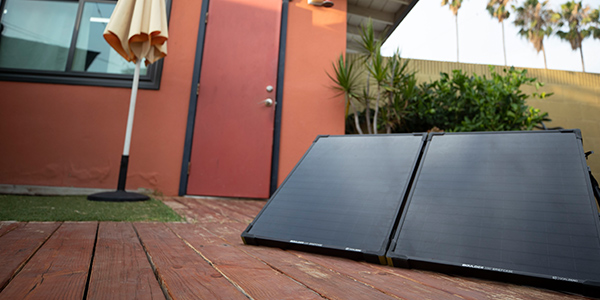A big part of $612 million intended to provide battery backup to homes in high fire-threat areas has been gobbled up by customers who use electricity to pump well water instead of helping the low-income and medically vulnerable residents it was meant for, the California Public Utilities Commission said Thursday.
The CPUC approved $830 million for its Self-Generation Incentive Program (SGIP) in January, with $612 million dedicated to “equity” and “equity resiliency” subsidies to aid residents who face repeated public safety power shutoffs (PSPS) by utilities to prevent wildfires. Thousands of the program’s targeted customers rely on electrically powered medical equipment to keep them alive. (See California PUC Devoting $1.2B to Self-generation.)
In its decision, the CPUC authorized investor-owned utilities to collect $166 million annually from ratepayers from 2020 to 2024. However, the commission did not include income criteria for the well-pump grants, which are part of the program, nor did it prevent customers from applying for funds for their vacation homes.
“We were seeing some second-home residents” receive the hefty grants, which pay the full cost of battery storage and solar cells to charge the units, said Commissioner Clifford Rechtschaffen.
The program’s “very clear focus was on helping the most vulnerable customers and communities in high fire-threat areas and ones that had been affected by multiple PSPS events,” Rechtschaffen said. “In particular, we targeted medical baseline customers, low-income customers and critical care facilities in disadvantaged communities.”
“The program provides very, very generous subsidies,” he said.
More than eight months after the decision took effect, with one of California’s worst fire seasons in full force, the state’s three large investor-owned utilities haven’t started reaching out to medically vulnerable customers, Rechtschaffen said.
Instead, developers of storage systems have targeted households with wells, regardless of income, and scooped up much of the funding that was supposed to last through 2024. Commissioner Martha Guzman Aceves said an informal analysis by her staff showed that only a small percentage of the storage contractors were licensed by the state.
Pacific Gas and Electric has already committed its $270 million share of the multi-year program and has hundreds of customers on a waiting list, Rechtschaffen said. Southern California Edison and San Diego Gas & Electric have doled out 50% and 60% of their shares, respectively, he said.
Half the applications have been for well-pump programs, while 30% have been for medically vulnerable customers, he said.
In his proposed decision, Rechtschaffen wrote that “if current trends continue, incentive awards to electric-pump … customers threaten to severely limit the … funds available to the many other types of eligible residential and non-residential customers.”
He proposed adopting income eligibility criteria for grants that haven’t already been funded, requiring households to show they fall below 80% of an area’s median income and that a well provides water for their primary residence.
“Requiring electric-pump well customers to meet the same income eligibility restrictions required of most other …. residential customers levels the playing field and helps ensure that other types of customers with critical resiliency needs have the opportunity to use equity resiliency budget funds,” he wrote.
The decision would apply the new criteria to grants that were submitted but not fully funded as of Aug. 17, when Rechtschaffen issued a letter advising utilities of the commission’s concerns.
Several commissioners expressed unease about applying new rules retroactively to those who have already filed for funding.
“We evidently made a serious omission” in not restricting the funds based on income, said Commissioner Genevieve Shiroma. But “to now go back and say, ‘Oops,’” and change the rules for pending applications, “I’m very uncomfortable with that,” she said.
CPUC President Marybel Batjer said she shared her colleagues’ worries about retroactivity but believes the program must be fixed.
“I’m very concerned about the equity program and it being oversubscribed so quickly when this was [planned] to be a three-year rollout,” Batjer said. “On balance, I think we have to address it. And I agree, Commissioner Rechtschaffen, with your assessment, but I do feel we need more consideration on this item.”
The commissioners voted unanimously to put off a decision until their next meeting on Oct. 22 so they could gather more information and weigh their options.



